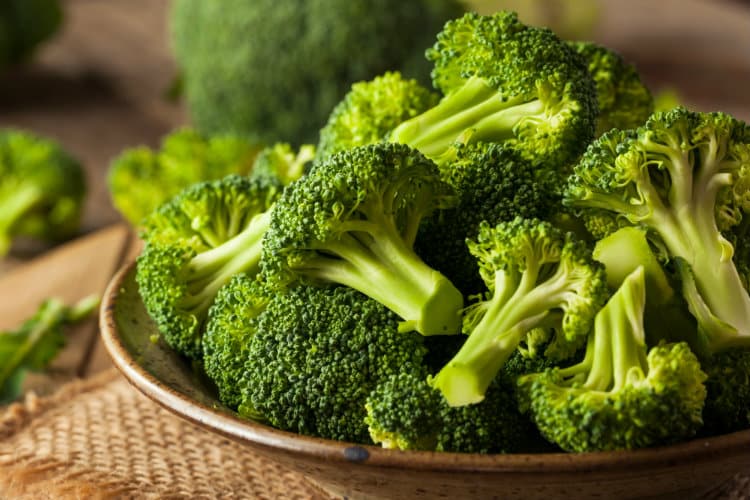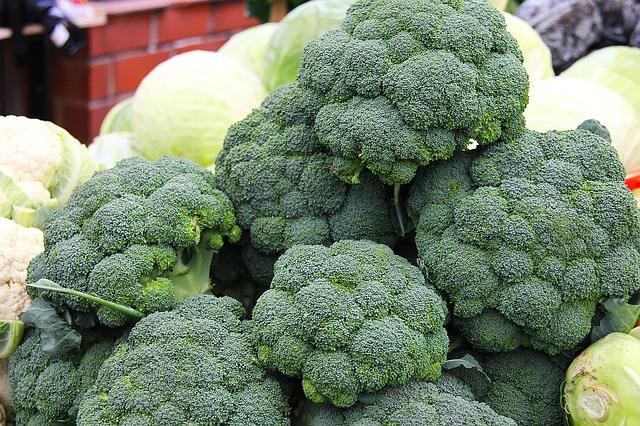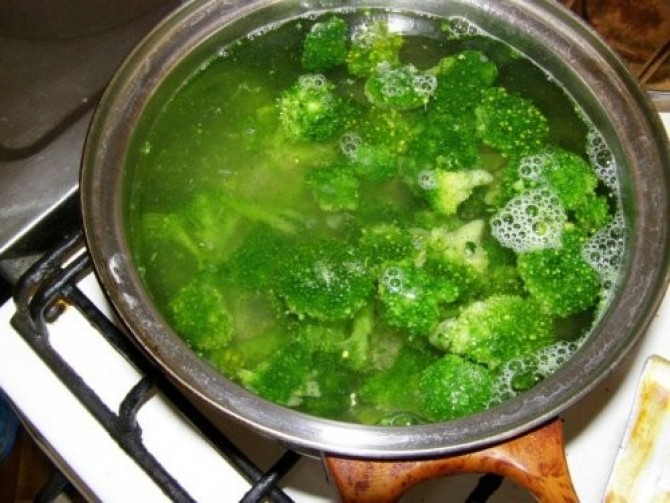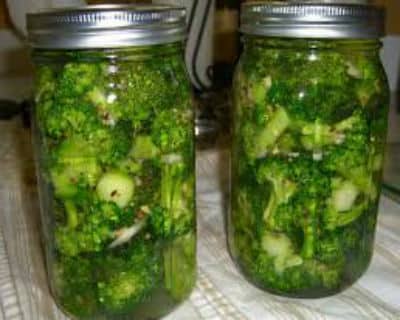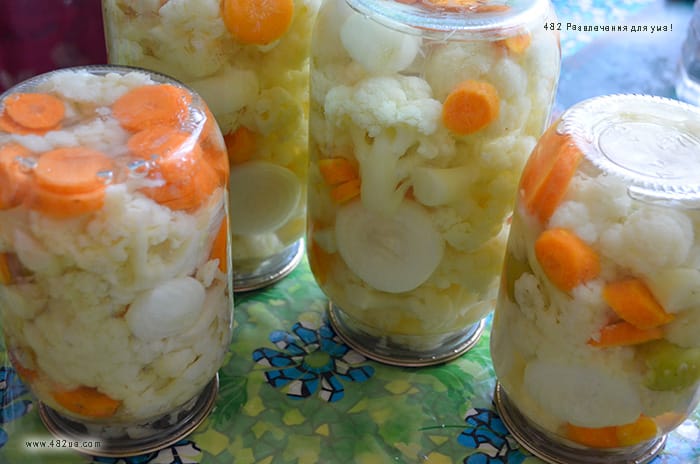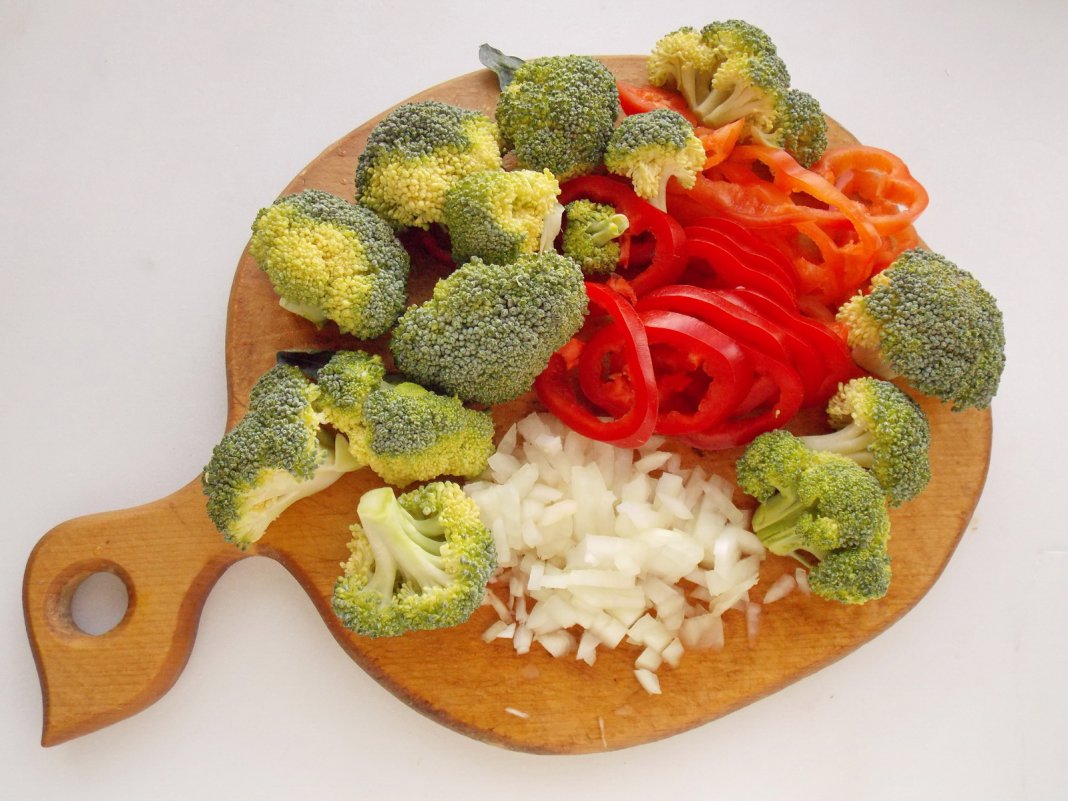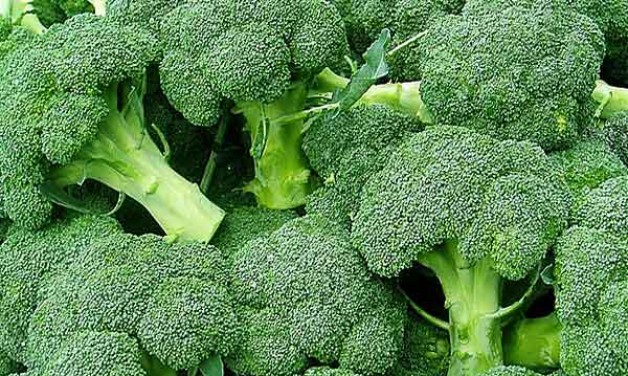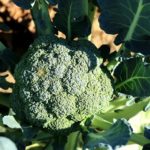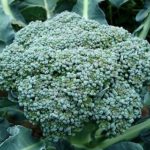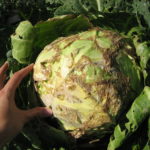Many vegetable growers grow broccoli on their plots. The popularity of this vegetable is due to the fact that it is considered one of the most delicious varieties of cabbage. In order to enjoy the pleasant taste of this plant all year round, you need to familiarize yourself in advance with how to properly prepare broccoli for the winter.
- Beneficial properties of broccoli
- Fights cancer
- Prevents diseases of the digestive organs
- Treats diseases of the cardiovascular system
- Fights respiratory diseases
- Helps get rid of excess weight
- Prepare the necessary ingredients
- Preparing broccoli
- Korean salad
- Freezing broccoli for the winter
- Pickling broccoli
- Pickled
- Canned in jars
- In tomato filling
- With bell pepper and cauliflower
- In sweet and sour marinade
- Recipe without sterilization
- Pickled
- How to preserve broccoli for the winter
- Conclusion
Beneficial properties of broccoli
Numerous scientific studies have repeatedly proven that such cabbage has beneficial properties that distinguish it from other vegetables. Before preparing dishes from this vegetable plant, everyone needs to become familiar with the features of its effect on the human body.
Fights cancer
Cabbage fruits contain a large amount of sterol, which prevents the occurrence of cancer that affects the mammary glands of girls. This component also protects the prostate gland of men from malignant tumors. In addition, a lot of sulforaphane accumulates in ripe vegetables. This trace element has an antioxidant effect, which stops the development of cancer cells in the body.
Another element from the composition that prevents cancer is vitamin C. It prevents malignant tumors from developing due to its anti-inflammatory properties.
Prevents diseases of the digestive organs
Ripe broccoli and freshly squeezed vegetable juice have a beneficial effect on the process of bile production. Thanks to this, people with a deformed gallbladder digest food much faster. Regular consumption of fresh cabbage cleanses the stomach of bacteria that cause stomach ulcers or gastritis. The vegetable also improves the well-being of people who already have these diseases. It contains components that restore the mucous membrane and eliminate pronounced signs of peptic ulcer disease.
Treats diseases of the cardiovascular system
The beneficial properties of broccoli help get rid of most diseases that affect the functioning of the circulatory system. The fruits contain protein, the composition of which is very similar to the proteins from chicken eggs. At the same time, it completely lacks cholesterol, which has a positive effect on blood circulation.
The vegetable contains choline and methionine, which cleanse the blood of excess cholesterol and dilate blood vessels. Cabbage also contains potassium and magnesium, which make the heart muscles stronger.
Fights respiratory diseases
Broccoli is known for eliminating dangerous microorganisms that cause the appearance and development of lung diseases. Doctors advise smokers with many years of experience to eat more cabbage, since their body’s protective functions are weakened. Sulforaphane, which is part of the vegetable plant and fights infectious diseases, is responsible for protecting their health.
This component also helps cope with:
- chronic form of bronchitis;
- exacerbations of asthma.
Helps get rid of excess weight
Ripe plants and decoctions prepared from them help cleanse the body of toxins and waste. Nutritionists recommend adding broccoli dishes to your diet, as they help get rid of extra pounds. Weight loss is achieved due to the fact that the product removes excess fluid from the body.
Prepare the necessary ingredients
Before starting to prepare broccoli for the winter, people need to familiarize themselves with the features of preparing this vegetable. First, they select the highest quality fruits that are suitable for preparing preserves. When choosing a head of cabbage, take it in your hands and squeeze it tightly. If the shape of the fruit becomes deformed under load, it means that it is not fully ripe.Such heads of cabbage are not suitable for fresh salads and canned food, as they quickly soften and have virtually no crunch.
Ripe fruits have elastic leaves with a pleasant and aromatic smell. For winter preservation, only healthy fruits that are free of darkening, cracking or black spots are selected.
For cooking, do not use vegetables that are oversaturated with nitrates. To distinguish such vegetable plants from normal heads of cabbage, pay attention to the thickness of the leaves. Cabbage, which contains a lot of nitrates, has rather thick leaves. Also, to identify chemical additives, pay attention to the weight of the fruit. Heads of cabbage without nitrates weigh much less.
Vegetable growers do not recommend buying broccoli with blossoming flowers and yellowish heads for canning. Such plants are very tough and do not cook well. Green-colored fruits with a faint burgundy tint are suitable for harvesting for the winter. Cabbage inflorescences selected for making preparations are soaked for 20-40 minutes in warm water and cleaned of dirt.
Preparing broccoli
Every housewife who loves winter canning cooks broccoli at home. There are several recipes for preparing delicious dishes from this vegetable plant.
Korean salad
Many housewives consider Korean cuisine to be very complex, so they rarely eat Korean salads. However, people who have familiarized themselves with the recipe for such a snack do not have any difficulties in the process of preparing it.
When creating a Korean salad, pour water into a small saucepan, place it on a gas stove and boil. Then the cabbage is thoroughly washed with water and cut into several inflorescences. After this, two bell peppers are cut into two equal parts and cleaned of internal seeds.Having prepared the main ingredients, pour them into boiling water and add 35 grams of salt to it. Vegetables are boiled for 25 minutes, after which they are poured into a bowl.
While cooking cabbage, two small carrots are grated and placed on a plate. Then two bunches of dill and chopped garlic cloves are added to it. After this, all the prepared ingredients are mixed, re-salted and poured with 50 milliliters of vegetable oil and vinegar.
Freezing broccoli for the winter
Cabbage is often frozen in the freezer for winter storage. For this fresh vegetable:
- put in a bowl;
- fill it with water;
- add some salt.
After 35-40 minutes, the cabbage inflorescences are removed from the container and washed under running water. After this, they are laid out on a flat surface to dry. When the cabbage dries, it is transferred to plastic bags and placed in the freezer.
Pickling broccoli
To pickle a snack for the winter, cabbage is cut into small pieces and placed in a two-liter glass jar. Then the container is filled with cold liquid and salted with 25 grams of salt. After this, the container with cabbage inflorescences is transferred to a dark and warm room. The vegetable is infused until the fermentation process begins in the jars.
When the mixture begins to ferment, pour the brine out of the jar, add 40 grams of sugar and pour it back. After half an hour, the jars of cabbage are transferred again to a warm room for three days, after which they are placed in the refrigerator for further storage.
Pickled
To prevent the vegetable plant from losing its beneficial qualities, some housewives prefer to pickle it.To do this, a kilogram of cabbage is thoroughly washed in cold water, cut into small pieces and placed in jars where they will be pickled. Then add two chopped heads of garlic, three bunches of dill, two bay leaves and parsley to each container.
After this, a brine is prepared, which will be poured into jars with ingredients. To prepare it, add 20 grams of salt and sugar to 5 liters of water. The liquid is boiled for 20-25 minutes, after which it is poured into jars. The rolled up containers with cabbage are transferred to the cellar.
Canned in jars
For long-term winter storage of vegetables, housewives have to can them.
To do this, a kilogram of broccoli is soaked in a saline solution and rinsed in water to clean the plant of dirt and midges. Then the inflorescences are cut and placed in a container for canning. When the vegetable is distributed into jars, make the marinade. To prepare it, pour water into a saucepan and add 40-50 grams of salt and sugar. The brine is boiled for forty minutes, after which it is poured into jars. Containers with broccoli are rolled up with sterilized lids and taken to the cellar.
In tomato filling
To prepare an unusual appetizer, many people cook broccoli with tomato sauce. To create this dish, 800 grams of cabbage inflorescences are cut and blanched in a hot saline solution. Then 100 grams of tomatoes, 80 grams of pepper and two heads of garlic are ground in a meat grinder. The resulting mixture is transferred to a saucepan, stirred with vinegar and boiled for 15 minutes. Then add the soaked cabbage to a container with boiling marinade and cook over low heat for half an hour.
The prepared snack is poured into jars and covered with lids.
With bell pepper and cauliflower
Among the delicious broccoli recipes, there is an appetizer prepared with the addition of cauliflower and bell pepper. First, peel and finely chop two onions. Then wash 500 grams of cauliflower and 600 grams of broccoli under running cold water. The washed ingredients are chopped and placed in a saucepan. After this, chop 100 grams of bell pepper, peel it from the seeds and stew it in a frying pan along with the chopped onion. Then pour the prepared cabbage into the frying pan and simmer it for 20-30 minutes.
The prepared appetizer is placed on a plate and sprinkled with green dill leaves on top.
In sweet and sour marinade
To prepare cabbage appetizer in sweet and sour brine, people study the specifics of preparing such a dish in advance. First prepare the sauce in which the broccoli will be marinated. To do this, add 70 grams of soy sauce, 50 milliliters of vinegar, 10 milliliters of ketchup, mayonnaise and 75 grams of sugar to a bowl. All components are mixed and placed in the microwave for 15-20 seconds.
After preparing the marinade, chop the cabbage and cook over low heat for about an hour. The cooked vegetable is mixed with the marinade and distributed into jars.
Recipe without sterilization
To quickly prepare winter preparations, recipes without sterilization are often used. First, the cabbage inflorescences are washed from dirt, dried and cut into small pieces. Then chop two onions, one carrot and a bell pepper. All ingredients are mixed and placed in jars. After this, boil water on a gas stove for 10-15 minutes. The boiled liquid is poured into jars with vegetables, after which vinegar, salt and sugar are added.The appetizer is rolled up with lids and, after cooling, transferred to a cool room.
Pickled
To quickly ferment cabbage, you need to clean the inflorescences from dirt and place them in a shallow bowl. Then they are filled with salty hot water and placed on a gas stove. After 40 minutes, the cabbage heads are removed from the boiling water and poured with cucumber brine. Cabbage prepared in this way is eaten after 25-40 days.
How to preserve broccoli for the winter
In winter, broccoli preparations are transferred to the cellar or any other room in which the temperature will not exceed 10-15 degrees. At high temperatures, canned cabbage is stored worse and spoils faster. If a person does not have the opportunity to move the preparations to the cellar, he will have to freeze broccoli in the freezer.
Conclusion
Many people want to eat cabbage inflorescences not only in summer, but also in winter. To preserve broccoli snacks at this time of year, people study in advance the features of preparing winter preparations from this vegetable.

